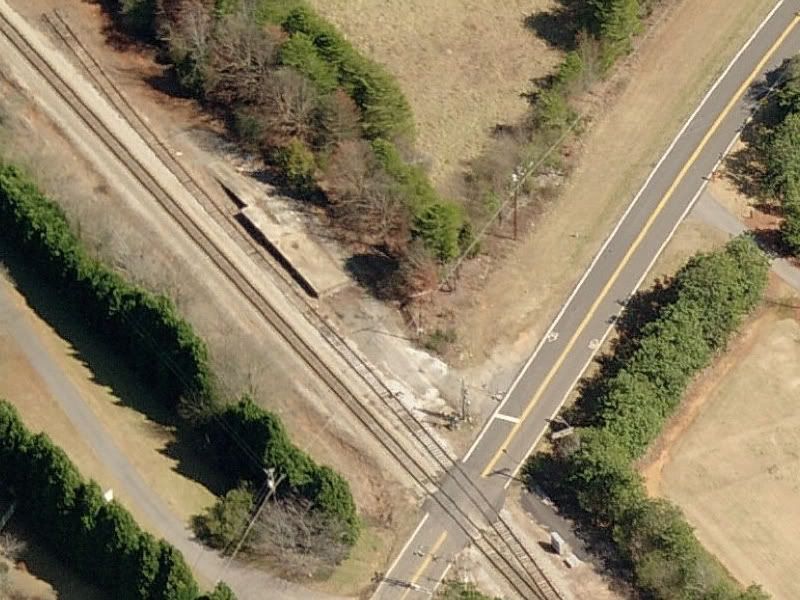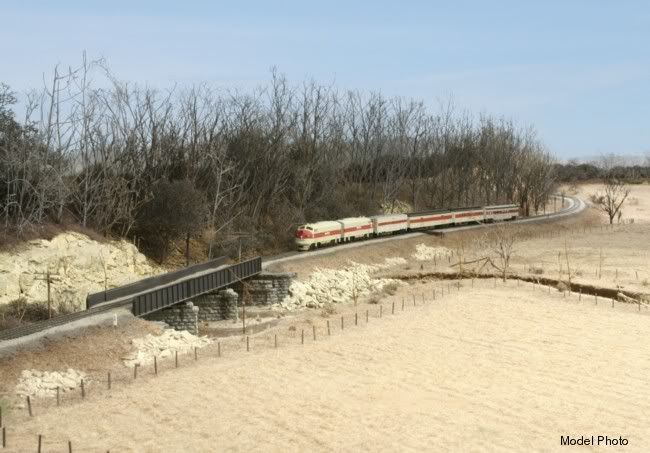The Seaboard Abbeville Subdivision (part of today's CSX Monroe Subdivision) stretches 135 miles west to east from Abbeville, SC to Monroe, NC. Today, this line is CTC single track with passing sidings and hosts about 25 trains each day. The modeled version will adhere to this same method of operation, since the progressive SAL installed CTC on the Abbeville Sub in the early 1960s. Eastbound trains exiting the south staging yard ill enter the layout at Harmony, the westernmost visible area of the layout. This tiny burg is located in a rural area of the South Carolina Piedmont between Columbia and Charlotte, NC. While there is not much in the way of an actual town, Harmony does offer a few scenic and operational features. However, this will mostly be an isolated area that is a great place to watch trains roll through the surrounding scenery. Lots of trees to model in this area!
» Track Plan
» Harmony Defect Detector
 |
| Figure 1 Seaboard Defect Detector - Athens, GA |
| Nikos Kavoori/AthensRails.com |
Rather than model the bland high car detector, I will be modeling an older Seaboard-style hot box and dragging equipment detector. This style detector fits both eras nicely, as several are still in service between Atlanta and Hamlet (Figure 1). The distinctive block building is a small detail that adds considerable charm to the overall layout. I also plan on making all detectors on the layout operational (eventually) so that an audio alert message is randomly triggered every so often by passing trains. As on the prototype, the train crew will need to locate the offending car and place it in the next available setout track. This adds yet another operational wrinkle that crews must contend with.
» Harmony Team Track
 |
| Figure 2 Team Track - Athens, GA |
I recently came across a 1948 SAL employee timetable that showed a 5-car capacity spur track at milepost G333.1, or just one-tenth of a mile from the Harmony Road grade crossing. It looks like there actually was a team track at this location after all!
» South Catawba
The SAL Abbeville Subdivision was a single track mainline with centralized traffic control (CTC) installed in the early half of the 1960s. The Catawba passing siding extended from Harmony northward to Catawba. This passing siding was (and is today) a controlled siding rather than a controlled siding.
A controlled siding has power switches and signals protecting the entrances to the siding, but the siding track is not connected to the signal system. Therefore, a train given a signal indication into the siding can only be assured that the route is cleared into the siding, but there may be equipment on the actual siding track. This is why the maximum authorized speed into a controlled siding is typically very low, usually 10 mph or restricted speed, which means the train must be able to stop in one half of the crew's range of vision.
On the other hand, the siding track in a signaled siding is bonded (connected electrically) to the signal system. This means that a train getting a clear route into the siding can be assured that the route is cleared into the siding and the siding track is not occupied by any other equipment. This allows signalled sidings to have higher speeds than controlled sidings, typically around 25-30 mph or medium speed. The speed of a siding will almost always be lower than the main track because the siding is built and maintained to lower standards, which is not a problem since trains using the siding will almost always be stopping in the siding.
Although the Catawba siding on the SAL (and still today on CSX) is a controlled siding, I will be modeling all sidings on the layout as signalled sidings. This is because I want to have block detection on all main tracks and passing tracks to support any future computerized automation I may develop. The south end of the passing siding will be protected by a set of Seaboard-style D-type mast signals.
» Neelys Creek
 |
| Figure 3 Lance Mindheim's N-Scale Monon |

0 comments